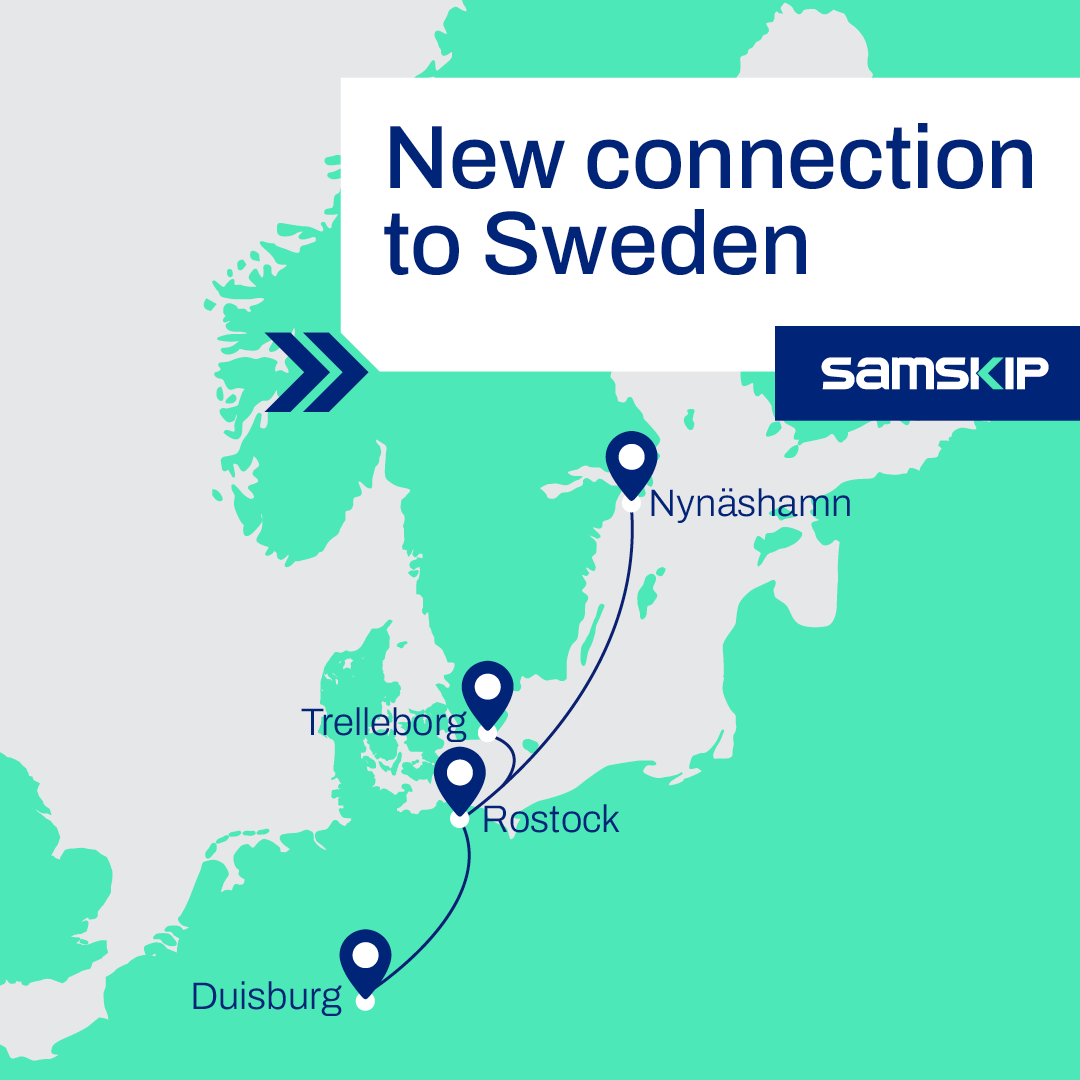Samskip and Hector Rail set up new Duisburg-Rostock line

Samskip has launched a new intermodal service between the port of Rostock and Duisburg in cooperation with Hector Rail. The service connects with the ro-ro services to Scandinavia from the Baltic seaport and runs three days per week.
The all-electric train service links the Duisburg Hohenbudberg terminal and the Rostock Trimodal terminal. Departing from Duisburg on Monday, Wednesday and Friday, the 700m length trains arrive in Rostock on Tuesday, Thursday and Saturday to coincide with Hansa Destination ferry connections to Nynäshamn (south of Stockholm).
Connecting Germany to Scandinavia
Entering the market in August 2021, Hansa has developed substantial freight volumes into and out of the Swedish midlands, with the regular Nynäshamn call periodically augmented by stopovers at Visby.
“There has been a clear need to increase capacity between Germany and Scandinavia based on growing trade volumes and new requests, but high diesel prices and continuing driver shortages are also steering more cargo away from the road,” explained Gert-Jan Meijer, head of trade at Sweden, Samskip.
The Duisburg-Rostock rail link also means Samskip can offer additional service options direct into southern Sweden and Finland by coordinating with separate daily ferry departures to Trelleborg, Kotka, Hanka and Rauma.
All kind of trailers
In addition to offering capacity for ISO containers, mega trailers and P400 trailers, wagons deployed accommodate non-cranable trailers, opening the new route to a wide range of third party and shippers’ own equipment.
The capacity boost comes at a time when a lot of companies are looking for more sustainable transport solutions, and this often results in a shift to rail. High frequency in rail services strengthens the case for sustainable transport, Meijer commented. “Our larger customers want to do more using lower carbon options, new customers are knocking on the door and it’s fair to say that there is a general mood in Germany that now is the time to switch away from road.”

You just read one of our premium articles free of charge
Want full access? Take advantage of our exclusive offer





